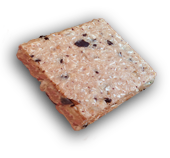 Byron and Whitney featured in AZ Central answering the burning question:
Byron and Whitney featured in AZ Central answering the burning question:
Do Squats Help Burn Fat? By Mya Passmore, Demand Media
Contrary to popular opinion, the easiest way to burn fat is while sitting, relaxing or resting. Vigorous exercise, swimming laps and running sprints are but three ways — and possibly the hardest ways — to burn fat. Increasing your body’s metabolism while resting is the optimal fat-burning method, and possibly the most efficient way to increase your metabolism is by building muscle.
Metabolic Rate
Like any machine, your body requires energy to function. Electronics, for example, require a minimum level of electricity or battery power to operate, and the human body is no different. It requires a base level of energy to maintain the body’s functions — breathing, digestion and blood circulation. These functions require a metabolic rate, which converts fat to energy. According to a study in the “Oxford Journal-Family Practice,” the metabolic rate accounts for 60 to 70 percent of your body’s total energy expenditure. The Centers for Disease Control and Prevention’s report on strength training states that muscles increase the body’s metabolic rate by burning more calories. So, increasing the body’s metabolic rate is extremely important for weight loss.
Build Muscle Mass
According to the American College of Sports Medicine, building muscle mass increases your body’s metabolism by as much as 15 percent by raising your muscle-to-fat ratio. Personal Trainers Byron Paidoussi and Whitney Cole of Fitness and Fuel LA say that for each pound of muscle, the body burns 34 calories. For instance, if a man weighs 180 pounds and drops 10 pounds of fat but gains 10 pounds of muscle, his metabolic rate will burn an additional 340 calories each day even though his weight remains the same. Because squats build muscle in three large muscle groups — the hamstrings, quadriceps and glutes — squats are an optimal exercise to increase muscle mass and metabolism.
Maintain Muscle Mass
The ACSM’s strength-training report, “Role in Body Composition and Health Enhancement,” notes that the average sedentary adult loses approximately 4 to 6 pounds of muscle per year. Over time, this muscle loss lowers metabolism and leads to weight gain. According to the report, the average rate of muscle loss is 2 to 3 percent per year and accounts for approximately 5 fewer calories burned each day. For instance, a person with a 1,500-calorie-a-day metabolic rate will burn 17 fewer calories at day while at rest. To counteract weight gain, the reports suggests performing resistance training such as squats and other low-impact exercises.
Build Large Muscles
Working multiple muscle groups or large muscle groups at once uses more energy and burns more fat than single-muscle group exercises. For example, doing a biceps curl requires less energy than a squat. According to the ACSM, the squat is an optimal large-muscle building exercise if properly executed. Because squats require the use of multiple muscle groups including the glutes, hamstrings and quadriceps along with the assistance of the core abdominal and lower-back muscles, the squat can build large amounts of lean muscle, which ultimately leads to an increased metabolic rate and less fat.
DO SQUATS HELP BURN FAT? http://healthyliving.azcentral.com/squats-burn-fat-11357.html






